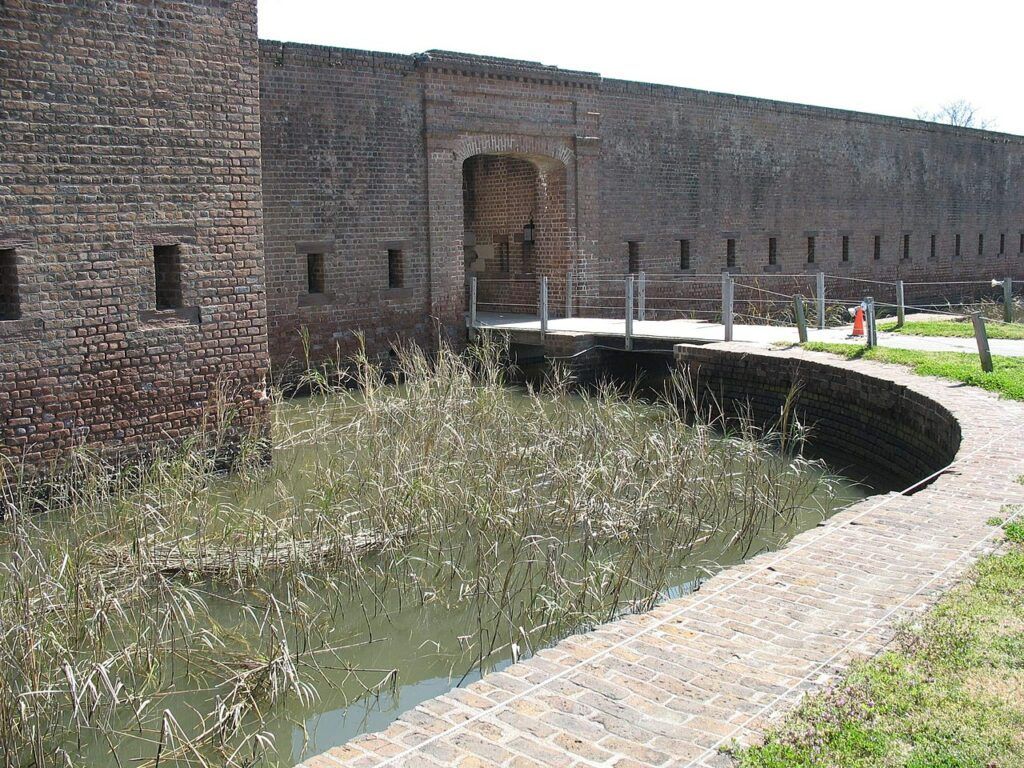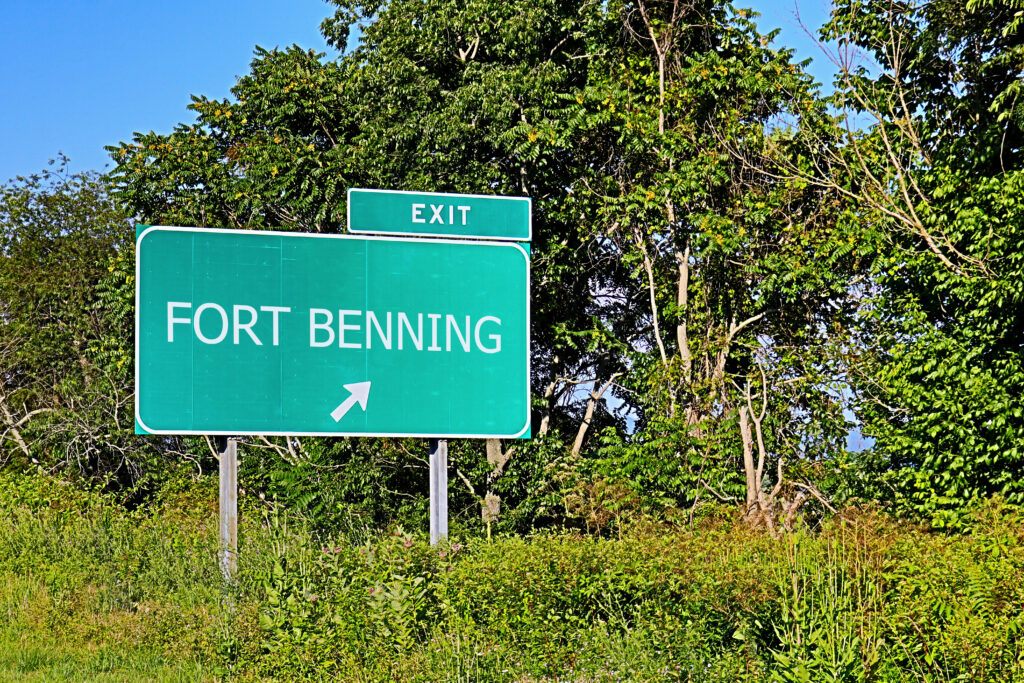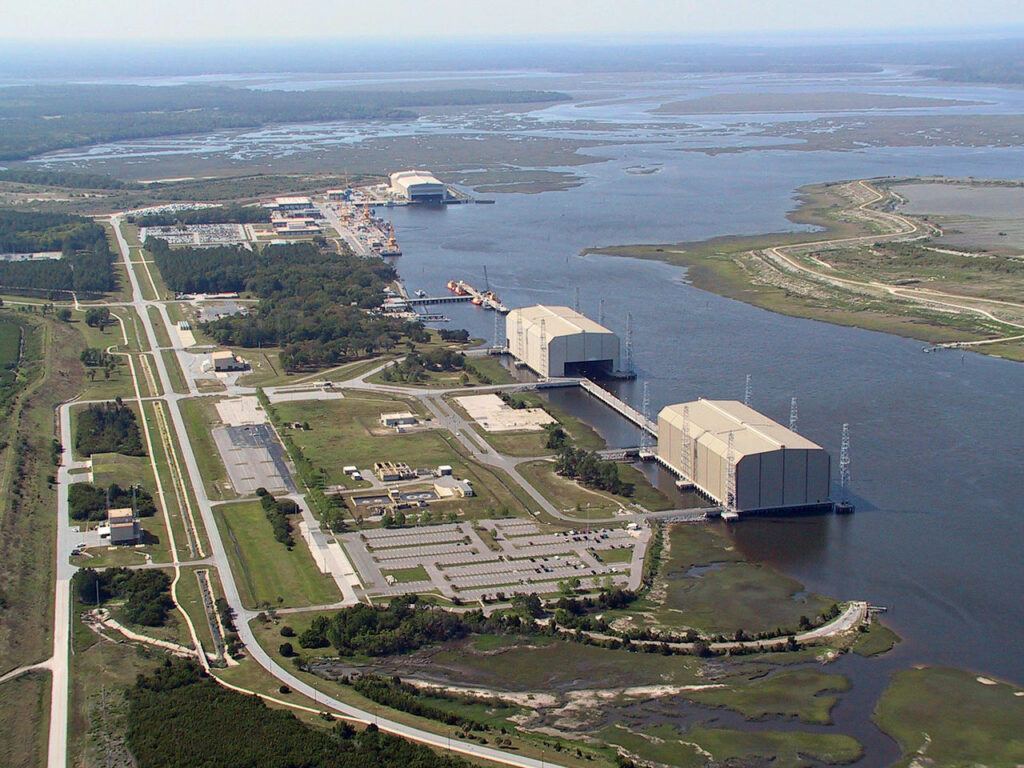Georgia has a rich military history, with numerous army forts established throughout the state, providing a fascinating insight into the nation’s past. These army bases have played significant roles in various conflicts, from the Revolutionary War to the Civil War and during peacetime operations.
Today, many of these historic structures are preserved and open to the public, offering a chance to experience their living history and remember those who have served at these installations.
Some of Georgia’s most notable army forts include Fort Frederica, Fort Pulaski, and Fort McAllister, each with a unique story to tell. From coastal defenses to strategic inland positions, these forts have been vital in shaping Georgians’ military history and culture.
Visitors to these sites can explore the well-preserved exterior walls and interior structures and even participate in guided tours, learning about the daily lives of soldiers and the broader defensive strategies employed during different periods.
As you explore the historic army forts of Georgia, it becomes clear that these strongholds are a testament to the region’s military past and the resilience and determination of those who served within their walls. As bastions of American history, these forts offer an important window into the country’s development and commitment to protecting its citizens.
Historical Background of Army Forts in Georgia

Georgia has a fascinating history of military forts dating back to the colonial era. These forts were built for various purposes, such as protecting the coastlines, defending against Native American tribes, and providing military training grounds for soldiers during times of war.
European settlers established many of Georgia’s earliest forts, such as Fort Frederica and Fort James Jackson, in the 18th century. Fort Frederica, established in 1736, was a British fort meant to protect the southernmost border of the thirteen British colonies from Spanish Florida.
Fort James Jackson, also known as Old Fort Jackson, was built in 1808 and is now one of the oldest remaining brick fortifications on the East Coast.
In the 19th century, the U.S. military built several forts in Georgia in preparation for potential conflicts, such as the Civil War. Fort Pulaski, constructed between 1829 and 1847, was a key coastal defense fort during the Civil War. The Union Army captured the fort in 1862, using it as a base to blockade the South.
Fort McPherson

Ft. McPherson, located in Atlanta, Georgia, was established in 1885 and had a rich history spanning over a century. It played a significant role during World War I as it served as a training camp for soldiers and a major logistics base. During World War II, the fort expanded its mission to include a prisoner-of-war camp.
The fort covers approximately 487 acres of land and features several notable buildings, including the Officers’ Club and Quarters, now listed on the National Register of Historic Places. It remained an active military installation until its closure in 2011 under the Base Realignment and Closure (BRAC) process ordered by the Secretary of Defense.
Since its closure, the site has undergone redevelopment efforts. A portion of the property was transferred to the City of Atlanta, which led to the creation of the Tyler Perry Studios. The remaining area is now under the management of the McPherson Implementing Local Redevelopment Authority (MILRA), which aims to create a thriving, mixed-use community on the property.
Some key facts about Ft. McPherson include:
- Established: 1885
- Location: Atlanta, Georgia
- Size: 487 acres
- Notable Features: Officers’ Club and Quarters, Tyler Perry Studios
- Status: Closed (2011)
Fort Benning

Ft. Benning, located in Columbus, Georgia, is one of the largest and most significant military installations in the United States. Established in 1918, the base has become an essential training and support center for infantry forces.
The fort’s primary missions include providing comprehensive training for the Army’s Infantry and Armor forces, conducting reception and integration of newly enlisted soldiers, and supporting various combat units. Some of its significant facilities are:
- Maneuver Center of Excellence (MCoE)
- U.S. Army Armor School
- U.S. Army Infantry School
- U.S. Army Airborne School
- U.S. Army Ranger School
Throughout its history, Ft. Benning has played a critical role in multiple conflicts, including World War I, World War II, the Korean War, the Vietnam War, and, more recently, the wars in Iraq and Afghanistan.
Additionally, Fort Benning hosts various cultural and recreational activities for soldiers and their families, such as the National Infantry Museum, the Ft. Benning Golf Course, and the annual Best Ranger Competition.
Fort Stewart

Fort Stewart, located in Liberty and Bryan counties, is the largest Army installation east of the Mississippi River. It covers around 280,000 acres and serves as a critical training site and deployment platform for various military units.
As the home of the 3rd Infantry Division, Ft. Stewart is known for its remarkable support capabilities, providing various modern training facilities such as tank gunnery ranges, maneuver training areas, and various simulations. Moreover, the installation is focused on environmental conservation, sustaining clean air and water while protecting wildlife.
Some of the key units stationed at Ft. Stewart include:
- 3rd Infantry Division
- 75th Ranger Regiment
- 3rd Combat Aviation Brigade
- Special Operations Weather Team
In addition to military training, Fort Stewart offers a range of recreation and support facilities for soldiers, their families, and the local community. Some examples are:
| Facilities |
| Cypress Sam’s |
| Pineview Lake Recreation Area |
| Taylors Creek Golf Course |
| Newman Fitness Center |
Fort Gordon

Fort Gordon was established in 1941; it is a primary training center for various military occupational specialties.
Some key features of Fort Gordon include:
- Cyber Center of Excellence
- Signal Corps Training
- Army Cyber Corps
The Cyber Center of Excellence, a critical component of Ft. Gordon, trains and develops cyberspace operations professionals. This center plays a significant role in preparing servicemembers for modern warfare and maintaining national security.
Fort Gordon’s Signal Corps Training is another important aspect of the installation. It offers various courses focusing on communication systems and networks, ensuring soldiers have the necessary skills to support operational communication needs across the Army.
Lastly, the Army Cyber Corps, headquartered at Ft. Gordon, works to protect and defend the nation’s cyberspace domain. This branch is essential in combating cyber threats from both state and non-state actors.
Modern Functions & Operations
Georgia hosts several important army forts that continue to serve crucial roles in modern military functions and operations. These forts provide training facilities for the army reserve and active duty military service members and support various missions and house units from different branches of the US military.
Fort Benning, for instance, is home to the U.S. Army Maneuver Center of Excellence, which trains soldiers in infantry and armor skills. Fort Gordon serves as the headquarters of the U.S. Army Cyber Center of Excellence and trains military personnel in cyber and electronic warfare capabilities.
While Fort Stewart is known for its rapid deployment capacity and houses the 3rd Infantry Division, it also supports National Guard and Reserve Component units. Similarly, Hunter Army Airfield is an important aviation hub for military and non-military missions.
Beyond their primary functions, these army forts in Georgia actively participate in community outreach, environmental conservation efforts, and cultural preservation initiatives. Their strategic locations not only contribute to national defense but also serve to strengthen local communities and economies.
Other Notable Military Installations in Georgia

Besides army forts, Georgia’s Department of Defense has many other noteworthy military installations, including Navy Bases, Coast Guard Bases, and Air Force Bases that play a crucial role in the security of the United States. These include:
- Moody Air Force Base (Moody AFB)
- Robins Air Force Base – Originally named Warner Robins
- Dobbins Air Reserve Base (Dobbins ARB)
- NAS Atlanta
- Kings Bay Submarine Base – A specialized military branch
- Marine Corps Logistics Base Albany (MCLB Albany) – Basic combat training and other basic training on logistics
Conclusion – Army Forts in Georgia
Georgia boasts a rich history of military significance, with numerous forts that span different periods and roles in the United States development. These forts have been crucial in various military campaigns, training exercises, and national defense strategies.
Through exploring Georgia’s army forts, we gain insights into the state’s military history and honor those who have served within these strongholds.
Some notable Army Posts in Georgia include:
- Fort McAllister: A well-preserved Civil War-era fort focusing on coastal defense.
- Fort Benning: A crucial infantry training base that has remained operational since World War I.
- Fort Pulaski: A historic fort that withstood the trial of modern weaponry during the Civil War.
Visiting these sites provides an opportunity for historical enrichment and appreciation for the dedicated service members who have been part of Georgia’s military legacy. The continued preservation and exploration of these forts serve as a testament to the importance of Georgia’s role in shaping the military history of the United States.

Cory is a website owner and content creator who enjoys fishing, history, coin collecting, and sports, among other hobbies. He is a husband and father of four.
Romans 15:4 For whatever was written in former days was written for our instruction, that through endurance and through the encouragement of the Scriptures we might have hope.

